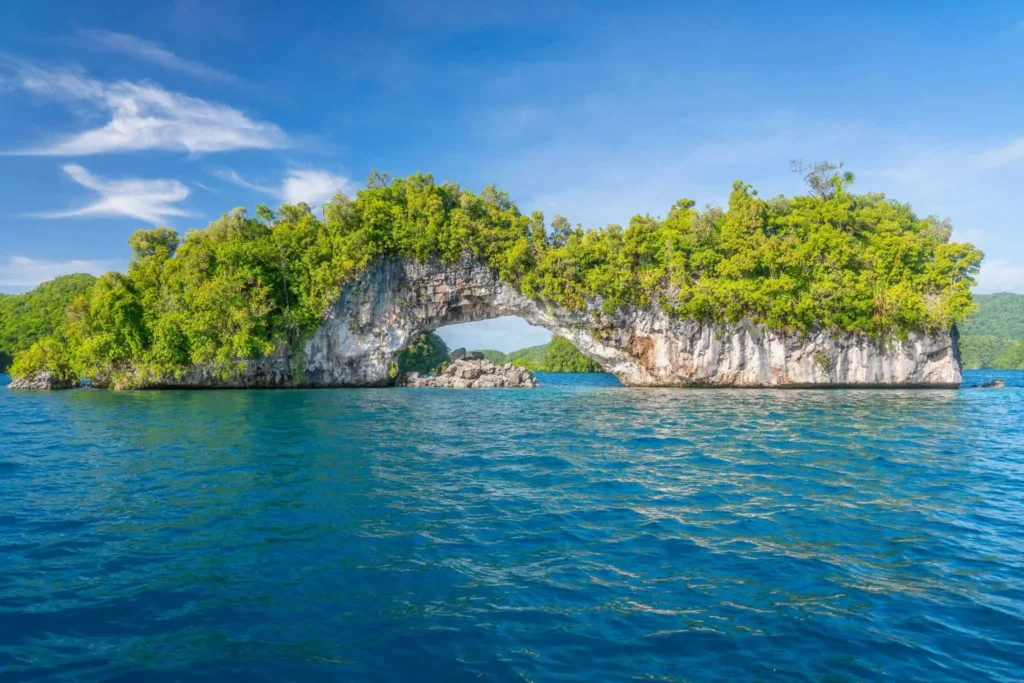| This post may contain affiliate links. Whenever you book or buy something through one of these, Giving Getaway gets a small commission, of which 100% will be donated to charity, without any extra cost to you! |
Have you ever wondered why Machu Picchu, the magnificent ancient city nestled in the Andes Mountains of Peru, was abandoned? The “Lost City of the Incas” was once a thriving center of civilization. But then something happened that led to its abandonment. What could it be?
In this post I will explore the intriguing history behind this iconic site and seek to provide a comprehensive understanding of why Machu Picchu, once a symbol of glory, was ultimately left behind by its inhabitants. Let us now delve into the rise and fall of Machu Picchu, uncovering the mysteries behind its desertion!
Key Takeaways
- Machu Picchu’s strategic location in the Andes Mountains, with natural defenses, access to resources, and a ridge location for surveillance and protection, contributed to its rise.
- Theories on the abandonment of Machu Picchu include environmental factors such as resource scarcity, natural disasters, prolonged droughts, soil erosion, and landslides, as well as political instability, diseases brought by European colonizers, and economic decline due to its remote location.
- The legacy of Machu Picchu lies in its architectural marvels, advanced agricultural practices, cultural and historical significance, and contributions to human history through technological advancements and insights into ancient civilizations.
The Rise of Machu Picchu
Situated on the rugged Andean terrain, Machu Picchu boasts structures that speak volumes about its historical significance. The rise of Machu Picchu can be attributed to several factors that contributed to its development and eventual recognition.
One key influence was the strategic positioning of Machu Picchu within the Sacred Valley region. Nestled amidst mountainous peaks, it provided natural protection against potential invaders while offering fertile land for agricultural activities. This advantageous location allowed the Inca civilization to establish a thriving community that flourished through cultivation and trade.
Additionally, the Incas’ advanced engineering techniques played a pivotal role in shaping Machu Picchu’s growth. The construction of intricate terraces facilitated efficient farming practices on steep slopes, turning seemingly inhospitable terrain into arable land capable of sustaining crops essential for sustenance and trade.
Furthermore, the city’s architectural marvels showcased the ingenuity and skill of its inhabitants. Utilizing precisely cut stones without mortar, they erected impressive structures such as temples and palaces that reflected their reverence for deities and rulers alike.
As word spread about Machu Picchu’s grandeur and prosperity throughout the region, it gained prominence as an influential hub connecting various communities within the Inca Empire. Its unique blend of natural beauty and remarkable craftsmanship solidified its standing as both a cultural center and administrative stronghold.
Theories on Abandonment
One explanation for the disappearance of Machu Picchu centers around hypotheses pertaining to the reasons behind its abandonment. Various theories have been proposed by researchers and scholars in order to understand why this once thriving city was ultimately left deserted.
One hypothesis suggests that the decline of Machu Picchu may have been due to environmental factors such as resource scarcity or natural disasters. Evidence from archaeological excavations and geological studies suggest that prolonged droughts, soil erosion, and landslides could have contributed to a decline in agricultural productivity, leading to food scarcity and ultimately forcing the inhabitants to abandon the site.
Another theory focuses on political instability as a potential factor for Machu Picchu’s abandonment. Some researchers propose that conflicts between different factions within the Inca Empire or external invasions could have destabilized the region and led to the desertion of Machu Picchu. Additionally, evidence from historical accounts of Spanish conquistadors suggests that diseases brought by European colonizers may have decimated local populations, making it difficult for communities to sustain themselves.
Lastly, economic factors are also considered in understanding why Machu Picchu was abandoned. The site’s remote location made it challenging for trade routes and commerce networks to be sustained over time. As a result, it is possible that economic decline played a role in the eventual desertion of the city.
Environmental Factors
Environmental factors, such as prolonged droughts, soil erosion, and landslides, are hypothesized to have contributed to a decline in agricultural productivity at Machu Picchu. These factors played a significant role in the abandonment of the site by the Inca civilization. The region surrounding Machu Picchu experiences seasonal variations in rainfall, with wetter months typically occurring between November and April. However, evidence suggests that there were periods of extended droughts during the height of Inca occupation.
Prolonged droughts would have had a detrimental impact on agriculture at Machu Picchu. The Inca relied heavily on terrace farming techniques to cultivate crops in the mountainous terrain surrounding the site. Drought conditions would have caused water scarcity and hindered crop growth, leading to reduced agricultural productivity and food shortages.
In addition to droughts, soil erosion also posed challenges for cultivation practices at Machu Picchu. The construction of terraces involved cutting into hillsides and creating flat surfaces for planting crops. However, without proper measures for soil conservation, heavy rains could have washed away fertile topsoil from these terraces over time. Soil erosion would have gradually depleted nutrients necessary for plant growth and further diminished agricultural yields.
Also, landslides were another environmental hazard faced by the inhabitants of Machu Picchu. The steep slopes surrounding the site make it susceptible to land instability during periods of intense rainfall or seismic activity. Landslides could bury fields under debris or disrupt irrigation systems essential for crop cultivation.
Cultural and Social Aspects
Cultural and social aspects surrounding the decline of agricultural productivity at Machu Picchu can be analyzed through an examination of the Inca civilization’s reliance on terrace farming techniques. The Inca civilization, which thrived from the 13th to the 16th century CE, employed advanced agricultural practices to sustain their growing population in a challenging mountainous environment. Terrace farming was a central component of their agricultural system, allowing them to cultivate crops on steep slopes by constructing terraces supported by stone walls.
The cultural significance of terrace farming at Machu Picchu is evident in its integration with the overall design and layout of the site. The terraces were carefully constructed to maximize sunlight exposure and water drainage, ensuring optimal growing conditions for crops such as maize, potatoes, and quinoa. These terraces not only provided sustenance but also symbolized the Inca’s mastery over nature and their ability to harness its resources.
Socially, agriculture played a crucial role in shaping Inca society at Machu Picchu. The success and productivity of agricultural activities were essential for maintaining food security and supporting a complex hierarchical structure. Surpluses generated from terrace farming enabled specialized labor divisions that facilitated advancements in architecture, engineering, artistry, and administration within the empire.
However, despite its initial success, Machu Picchu faced numerous challenges that led to its eventual abandonment. The reliance on terrace farming placed significant pressure on local ecosystems due to deforestation for crop cultivation and excessive soil erosion caused by intensive agriculture practices. Additionally, external factors such as climate change or socio-political disruptions may have exacerbated these environmental issues.
The Legacy of Machu Picchu
The legacy of Machu Picchu is evident in its architectural marvels and the advanced agricultural practices employed by the Inca civilization. The extraordinary construction techniques and the intricate design of the structures showcase the ingenuity and engineering skills of the Inca people.
The site consists of numerous impressive buildings, including temples, palaces, and residential areas, all made from precisely cut stones that fit together seamlessly without mortar. This level of precision indicates a highly developed understanding of geometry and engineering principles.
Besides, Machu Picchu’s agricultural terraces highlight the ingenious farming methods utilized by the Inca civilization. These terraces were built on steep slopes to maximize arable land for cultivation. The Incas carefully constructed these terraces using stone walls to create flat surfaces capable of retaining water and preventing soil erosion. They also implemented an innovative irrigation system that efficiently distributed water throughout the terraced fields.
The success of Machu Picchu as an agricultural hub relied on their sophisticated knowledge of crop rotation and their ability to adapt to different microclimates found within its vicinity. By cultivating a diverse range of crops such as maize, potatoes, quinoa, and beans across various altitudes, they ensured a sustainable food supply for their population.
Today, Machu Picchu stands as a testament to human creativity and resilience. Its preservation not only allows us to appreciate its architectural grandeur but also provides valuable insights into ancient civilizations’ technological advancements in architecture and agriculture.
Conclusion
The abandonment of Machu Picchu is a complex phenomenon that can be attributed to a combination of environmental factors and cultural/social aspects. The decline of the Inca civilization, along with changes in trade routes and political instability, likely played a role in the desertion of this once glorious city.
While there is no definitive answer as to why Machu Picchu was abandoned, it is likely that a combination of these factors ultimately led to its desertion. The exact circumstances surrounding its abandonment may forever remain shrouded in mystery, but its significance as an enduring symbol of Inca civilization continues to captivate visitors from around the world.
























